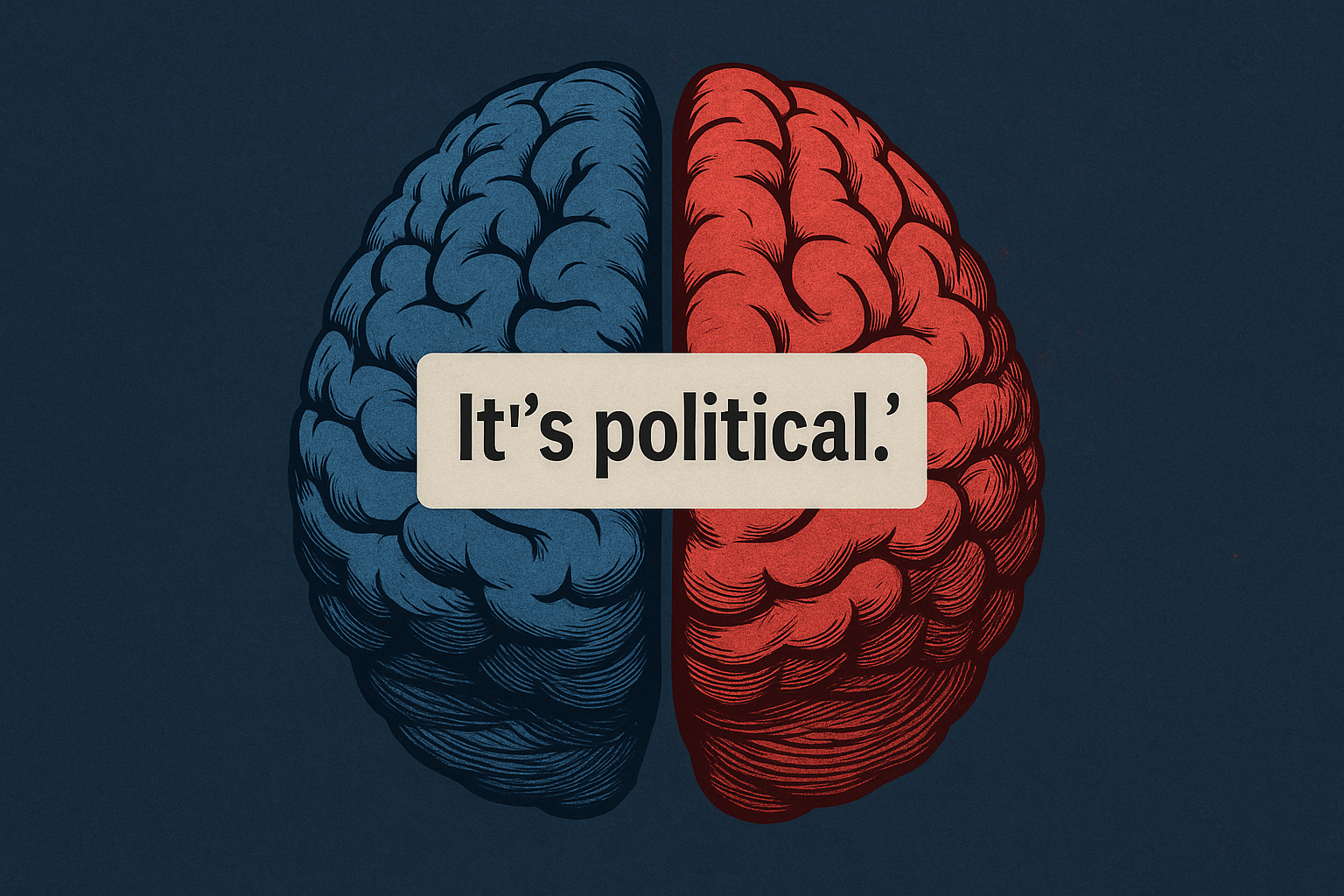The legal and corporate landscape surrounding Diversity, Equity, and Inclusion (DEI) is undergoing a rapid and profound transformation. In early 2025, a series of executive orders from the Trump Administration signaled a decisive federal pivot away from established DEI frameworks, ushering in a new era of intense scrutiny and uncompromising enforcement. This aggressive posture, often characterized by a strategy of “Attack and Never Apologize,” leaves little room for negotiation or incremental adjustments, compelling American institutions to react swiftly and decisively.

For attorneys, particularly those in states like California, understanding these federal shifts and their real-world impact on Fortune 500 companies and major universities is not just academic — it’s critical to advising clients in an increasingly complex and adversarial environment.
This blog post encapsulates recent research into how America’s leading institutions are responding to these federal actions, and what it means for the practice of law today.
The Federal Catalyst: An Uncompromising Stance
The current wave of change was largely initiated by three key executive orders issued in January 2025, which reflect a federal strategy designed to fundamentally dismantle DEI as it has been broadly understood:
- Executive Order 14173, “Ending Illegal Discrimination and Restoring Merit-Based Opportunity,” serves as the cornerstone, emphasizing a return to merit-based hiring and explicitly targeting what it defines as “illegal DEI” programs. The order provides no definitions or pathways for “legal” DEI.
- Executive Order 14151, “Ending Radical and Wasteful Government DEI Programs and Preferencing,” reinforces this stance by ordering the immediate elimination of federal DEI/DEIA offices and programs across government agencies.
- Executive Order 14168, “Defending Women from Gender Ideology Extremism and Restoring Biological Truth to the Federal Government,” redefines “sex” solely on a biological basis, directly impacting gender identity protections within federal contexts, and signaling a broader pushback against contemporary understandings of gender.
These orders have been swiftly followed by uncompromising guidance from federal agencies, including the Department of Justice (DOJ), Department of Education (DOE), and the Equal Employment Opportunity Commission (EEOC). This guidance consistently emphasizes non-discrimination, warns against programs that use protected characteristics for preferences or segregation, and sets the stage for potential civil compliance investigations. The message is clear: compliance is non-negotiable, and penalties are severe, particularly for federal contractors and grant recipients who now face heightened False Claims Act (FCA) liability for non-compliance. This “attack and never apologize” approach means institutions cannot expect federal leniency or a softening of demands.
Fortune 500 Responses: Strategic Adaptation Under Pressure
America’s corporate giants are navigating these federal directives with a mix of caution, strategic recalibration, and, in some cases, outright legal confrontation. The uncompromising federal stance means they must act decisively, as waiting for a softening of demands is not a viable strategy.
Language Recalibration as a Defensive Maneuver: One of the most immediate and widespread responses has been a perceptible shift in public-facing language. Companies are increasingly rephrasing or reducing explicit mentions of “Diversity, Equity, and Inclusion” in their annual SEC filings (like Form 10-K), opting instead for terms like “inclusion,” “belonging,” or “workforce composition.” For instance, Microsoft notably reduced DEI references in its 2024 10-K by 76%, while JPMorgan Chase rebranded its “Diversity, Equity, and Inclusion” section as “Workforce Composition” in its 2025 filing. This suggests a careful attempt to mitigate legal exposure and reduce targets on their backs, rather than a fundamental shift in internal values.
Shareholder Engagement and Counter-Pressure: While some activist shareholders are pushing for a rollback of DEI, many others are actively defending it. Costco and Apple shareholders, for example, overwhelmingly rejected anti-DEI proposals in early 2025, demonstrating strong investor support for continued DEI initiatives as a business imperative. This internal pressure provides some counterweight to the external federal demands. Conversely, companies like Target have faced proposed class-action lawsuits from shareholders alleging misuse of funds for “political and social goals” related to their DEI efforts. This creates a challenging environment for corporate boards, balancing varying stakeholder expectations against a federal government that shows no sign of backing down.
Mounting Litigation and Regulatory Investigations: The legal landscape is heating up. C-suite executives are increasingly concerned about DEI-related litigation, with nearly half anticipating legal challenges in the coming year. Specific cases are already setting precedents:
- The American Alliance for Equal Rights (AAER) has successfully settled cases against American Airlines and Southwest Airlines, challenging their supplier diversity and travel award programs, respectively, on grounds of racial preference. These quick settlements reflect the aggressive nature of the legal challenges.
- IBM is facing a discrimination suit from a former employee alleging performance management was a pretext for racial/sex-based quotas.
- Wells Fargo is grappling with a class action related to its policy requiring diverse interview candidates, alleging sham interviews.
- Adding another layer of complexity, the Federal Trade Commission (FTC) has launched an investigation into potential antitrust issues related to companies colluding on DEI metrics—a novel legal front opened without apology.
For federal contractors, the implications are particularly acute. They are now required to eliminate internal “illegal DEI” efforts and certify compliance, facing potential FCA liability for false certifications. The government has broadly defined “illegal DEI” to include preferential employment actions, “diverse slate” policies, and even Employee Resource Groups (ERGs) that are exclusive or advance preferential agendas based on protected characteristics. The lack of clear, precise definitions means the burden of proof for compliance, and the risk of misinterpretation, falls squarely on the contractors.
Major University Responses: Direct Attacks on Funding and Autonomy
Higher education institutions find themselves at a crucial intersection, balancing their traditional commitments to diversity and inclusion with unprecedented federal pressure, often tied directly to funding. The federal approach here is clearly confrontational, demanding immediate compliance or threatening dire financial consequences.
Programmatic Shifts and Closures Under Duress: Some universities are taking drastic measures to comply. The University of Michigan (U-M), a long-standing leader in DEI efforts, announced in March 2025 the closure of its Office of Diversity, Equity, and Inclusion (ODEI) and the discontinuation of its DEI 2.0 Strategic Plan. This decision was explicitly linked to federal executive orders and direct threats to withdraw substantial federal funding ($2.2 billion to $2.65 billion frozen). U-M plans to reallocate hundreds of millions previously earmarked for DEI into student-facing programs like financial aid and mental health services, while also ceasing the use of diversity statements in hiring and admissions. Columbia University is also reportedly scaling back its DEI initiatives. These actions are often defensive concessions rather than willing policy shifts.
Intensified Scrutiny and Investigations with Punitive Aims: Universities with large endowments (over $1 billion) are explicitly targeted for civil compliance investigations by federal agencies. The Department of Education’s Office for Civil Rights (OCR) has launched investigations into 45 universities under Title VI, focusing on partnerships alleged to promote race-based discrimination. Beyond investigations, Harvard University’s situation exemplifies the aggressive federal strategy:
- Funding Freeze & Contract Cancellations: In April 2025, the Trump administration froze over $2.2 billion in multi-year federal grants to Harvard, following further demands. An additional $100 million in GSA contracts are being redirected.
- International Student Visa Revocation: In May 2025, the Department of Homeland Security (DHS) revoked Harvard’s certification to enroll international students, citing “insufficient compliance” with records requests. This immediately jeopardized the legal status of over 6,800 international students—a quarter of Harvard’s student body—a move temporarily blocked by a federal judge but indicative of the punitive intent.
- EEOC and FCA Investigations: The EEOC is investigating Harvard’s hiring practices based on alleged discrimination, citing internal data showing a significant decline in white male faculty. The administration also launched a False Claims Act (FCA) investigation into Harvard’s admissions procedures, demanding sworn testimony.
This relentless pressure forces universities into a defensive posture, using internal funds to cover frozen grants and engaging in costly legal battles to maintain their academic autonomy.
Policy Adjustments Post-SFFA v. Harvard: In the wake of the Supreme Court’s 2023 ruling in Students for Fair Admissions (SFFA) v. Harvard, which prohibited race-conscious admissions, universities are already adjusting. New DOE guidance in early 2025 has expanded the SFFA ruling beyond admissions, warning against “race preferences and stereotypes” in hiring, financial aid, and even curriculum that could create hostile environments. This pushes universities towards race-neutral, skills-based admissions processes and a careful re-evaluation of all programs that could be perceived as race-based, even as they attempt to maintain their underlying commitments to equity and inclusion.
Implications for Attorneys: Navigating an Unapologetic Landscape
For attorneys in California, a state known for its progressive stance on diversity and civil rights, these federal actions create a fascinating and challenging dynamic. While California is actively countering these federal directives through legislative efforts like Assembly Bill 1946 (AB 1946), which aims to codify DEI principles and prohibit state entities from complying with conflicting federal orders, attorneys must still advise clients who operate nationally or receive federal funding. The “attack and never apologize” strategy from the federal government means legal counsel must be particularly sharp, proactive, and prepared for aggressive enforcement.
Key considerations for legal practice include:
- Heightened Litigation Risk and Defense: Be prepared for a surge in discrimination lawsuits, both from those alleging “reverse discrimination” (emboldened by the federal stance) and from those defending existing DEI efforts under state law. Defense strategies must anticipate an aggressive federal litigant.
- False Claims Act Exposure: Counsel federal contractors and grant recipients on the rigorous new certification requirements and the significant FCA liability that could arise from non-compliance. The federal government’s willingness to use the FCA is a powerful enforcement tool with no quarter given.
- Defining “Illegal DEI”: The amorphous nature of “illegal DEI” requires meticulous legal review of all existing programs, training modules, hiring practices, and supplier diversity initiatives to identify and mitigate risk. The lack of federal apology for uncertainty means clients bear the burden.
- Language and Communication Strategy: Advise clients on how to strategically adapt their public disclosures and internal communications to navigate the evolving legal and political climate, ensuring compliance without sacrificing core values where permissible. This is a delicate dance between avoiding federal triggers and maintaining employee morale and corporate integrity.
- Navigating Conflicts of Law: This is paramount in California. Attorneys must guide clients through potential conflicts between federal directives and California’s robust state anti-discrimination laws (like FEHA) and proactive legislative measures (like AB 1946). This will likely lead to complex, multi-jurisdictional legal battles.
- Continuous Monitoring: This area is rapidly evolving. Staying abreast of new agency guidance, judicial rulings, and legislative developments at both federal and state levels is essential for effective counsel, as the federal government shows no signs of slowing its aggressive enforcement.
The current environment demands a nuanced and proactive legal approach. The “marriage” of Diversity and Inclusion, born in the 1990s, is now being tested by federal action from an administration that employs an “attack and never apologize” strategy. For attorneys, the task is to help clients chart a course that respects legal mandates while striving to foster environments where merit truly thrives in an equitable and inclusive manner, even in the face of uncompromising federal pressure.
Mitigation Strategies for Law Firms and Corporate Clients
As the federal landscape shifts, law firms and businesses must adapt thoughtfully—balancing legal compliance with their commitment to inclusive values. By auditing, reframing communications, securing expert guidance, and strategically engaging stakeholders, organizations can continue fostering belonging in ways that are both resilient and responsible.
-
Refine DEI Language & Framing
Shift internal and external communications to emphasize universally accepted values like “inclusive opportunity,” “cultural competence,” or “equity in access,” rather than explicitly referencing race, gender, or protected classes. This strategic reframing can help preserve the spirit of inclusive culture while remaining compliant with tightening regulations.Brownstein+11AP News+11The Guardian+11 -
Seek Specialized Legal Counsel and Stay Litigation-Ready
Collaborate with legal experts versed in civil rights law and emerging precedents to design DEI efforts that withstand scrutiny—while also preparing for potential legal challenges. This includes staying abreast of Title VII and Title VI jurisprudence, and evaluating risk alongside anti-discrimination principles.Jackson Lewis+4Today’s Managing Partner+4The Nourmand Law Firm+4Holland & Knight+1 -
Align with Stakeholder Expectations Responsibly
For corporate clients, engage proactively with investors, employees, and communities to articulate the business and ethical case for inclusion—framed in compliance with legal constraints. Aligning DEI in this manner helps reinforce its long-term institutional value even as federal policy becomes more restrictive.Holland & KnightReutersThe National Law Review

Percipio Company is led by Matthew Cahill. His deep expertise in cognitive, social, and workplace biases is rooted in the belief that if you have a brain, you have bias®. He works with executives to reduce mental mistakes, strengthen workplace relationships & disrupt existing bias within current HR processes, meeting protocols and corporate policies. Matthew has demonstrated success with large clients like LinkedIn, Salesforce and dozens of small to mid-size companies looking to create more inclusive workplaces, work smarter, generate more revenue and move from bias to belonging®.





